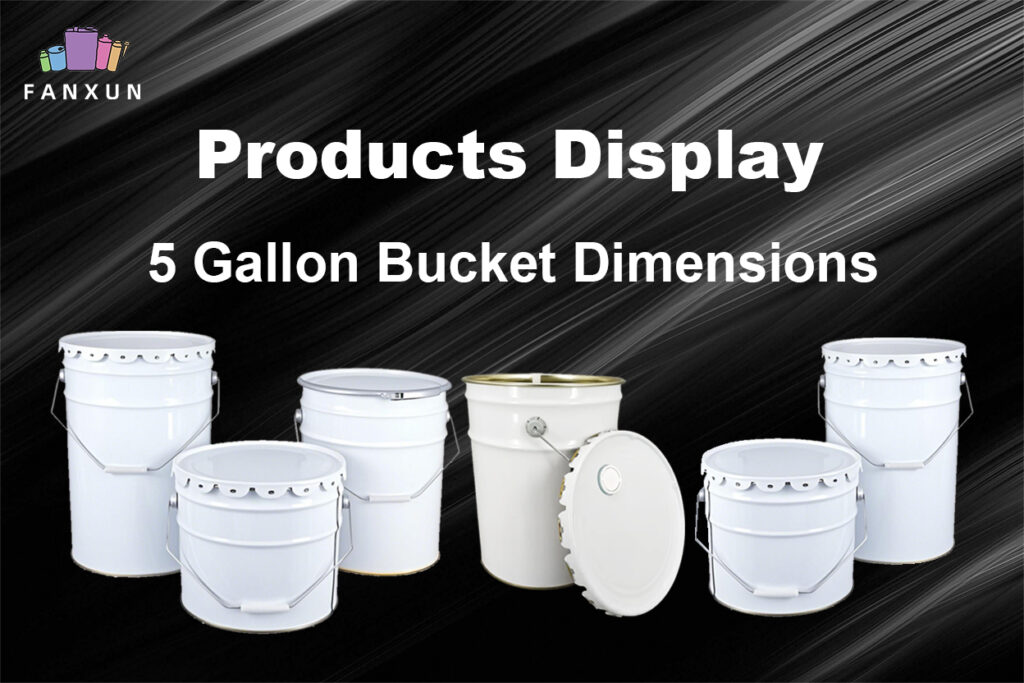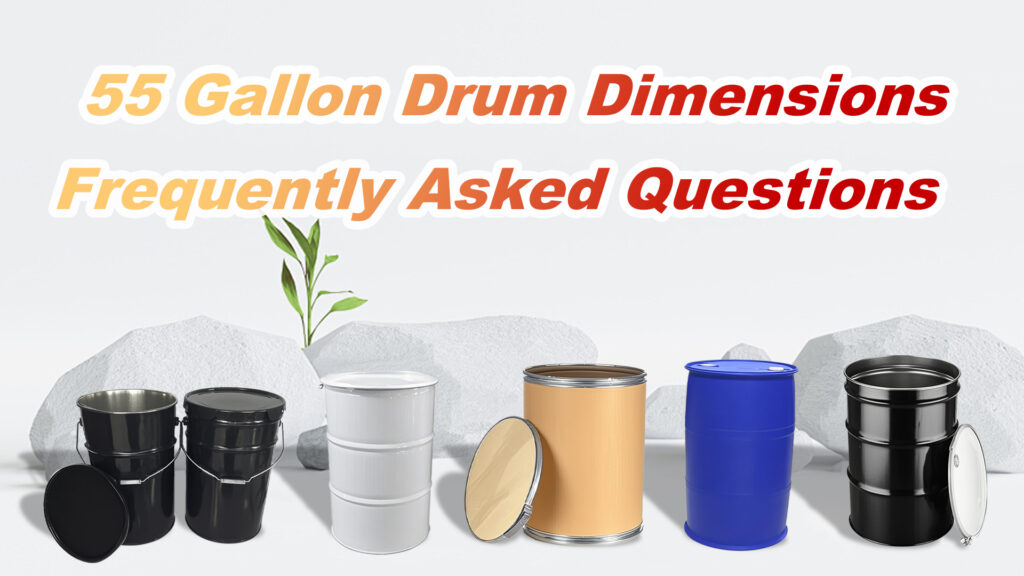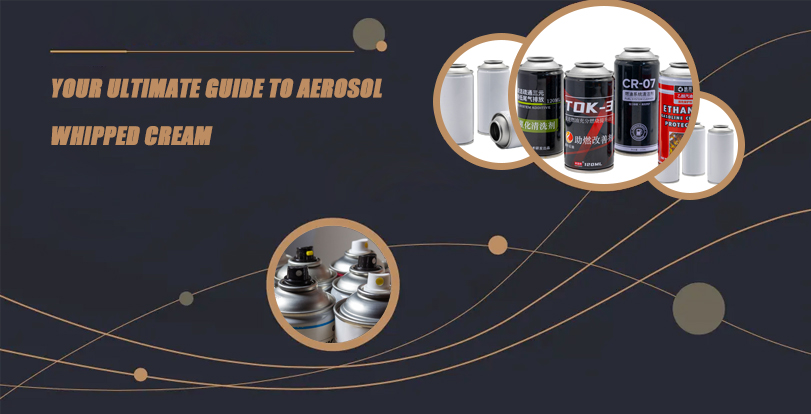We’ve all been there. Maybe you’re a little low on oil before a road trip, and the only store nearby carries a different brand than what’s currently in your engine. Or perhaps you did an oil change yourself and have half a bottle of synthetic left, but your next top-off uses conventional. The question inevitably pops into your head: “Is it okay to mix these engine oils?”
It seems like a simple question, but the answer is layered with nuance. As a car owner just trying to do the right thing for my vehicle, I’ve wrestled with this myself. I’ve scoured forums, talked to mechanics, and read countless articles. What I’ve found is that while the absolute worst-case scenario might be less common than some fear-mongering suggests, mixing oils isn’t something to be done carelessly. It requires understanding what engine oil does, how different oils vary, I what the potential consequences are.
This article is my attempt to consolidate everything I’ve learned, answer the common questions, and provide clear guidance from one car owner to another. Let’s break down the complexities of mixing engine oils so you can make informed decisions for your vehicle.
Pierwsze rzeczy: What Does Engine Oil Actually Do?
Before we even talk about mixing, let’s quickly recap why engine oil is so vital. It’s not just “lubrication.” Engine oil performs several critical functions:
- Lubrication: This is the most obvious one. Oil creates a thin film between moving metal parts (pistons, crankshaft, camshaft, itp.), reducing friction, heat, i nosić. Without it, metal would grind against metal, leading to catastrophic engine failure very quickly.
- Cooling: While your radiator does the heavy lifting, oil plays a significant role in cooling engine components, especially in the lower end (like the crankshaft and connecting rods) where coolant doesn’t reach as effectively. It absorbs heat and carries it away to the oil pan or oil cooler.
- Cleaning: Modern engine oils contain detergents and dispersants. Detergents help clean deposits from engine surfaces. Dispersants keep contaminants (like soot from combustion, tiny metal particles, and dirt) suspended within the oil so they don’t clump together and form sludge. These contaminants are then removed when you drain the oil during an oil change.
- Opieczętowanie: Oil helps form a seal between the piston rings and cylinder walls, which is essential for maintaining compression and preventing blow-by (combustion gases leaking past the rings).
- Corrosion Protection: Additives in the oil coat metal surfaces, protecting them from rust and corrosion caused by moisture and acidic byproducts of combustion.
Understanding these roles highlights why the jakość I specific formulation of your oil matter so much. It’s a carefully engineered fluid designed for demanding conditions.
Understanding the Language of Oil: Lepkość, Types, and Specs
To understand mixing, we need to understand the key differences between oils.
1. Lepkość (. “W” Numbers – NP., 5W-30)
This is probably the most familiar oil characteristic. Viscosity refers to the oil’s resistance to flow.
- The first number followed by “W” (which stands for “Winter”) indicates the oil’s viscosity (flowability) at low temperatures. A lower number means the oil flows better when cold, which is crucial for starting your engine in winter and ensuring quick lubrication upon startup.
- The second number indicates the oil’s viscosity at operating temperature (typically measured at 100°C or 212°F). A higher number generally means the oil remains thicker and maintains its protective film better under high heat and load.
Your car manufacturer specifies the correct viscosity grade(s) for your engine based on its design, tolerances, and expected operating conditions. Using the wrong viscosity can lead to inadequate lubrication (if too thin) or excessive drag and poor flow (if too thick).
2. Base Oil Types
This refers to the primary component of the oil before additives are mixed in.
- Conventional (Mineral) Oil: Refined from crude oil. It’s the oldest type and generally the least expensive. It provides adequate lubrication but breaks down faster under heat and forms deposits more readily than synthetics.
- Full Synthetic Oil: Man-made in a lab or heavily modified from petroleum. Synthetic base oils have more uniform molecules, making them more resistant to breakdown under extreme temperatures (both high and low). They offer better flow at cold starts, superior protection against wear, and better cleaning properties. They also last longer.
- Synthetic Blend (Semi-Synthetic) Oil: A mixture of conventional and synthetic base oils. It offers improved performance and protection compared to conventional oil but at a lower cost than full synthetic. The percentage of synthetic oil in a blend can vary significantly.
3. Performance Standards (API/ILSAC)
These acronyms on the oil bottle are crucial. They indicate that the oil meets certain minimum performance standards set by industry bodies.
- API (American Petroleum Institute): Look for the API “donut” symbol. The current standard for gasoline engines is API SP (introduced in May 2020). Older standards include SN, SM, SL, itp. Using an oil meeting the standard specified in your owner’s manual (or a newer standard) is critical.
- Ilsac (Międzynarodowy Komitet Doradczy ds. Specyfikacji smaru): Often paired with API standards, ILSAC standards (like GF-6A or GF-6B) focus on fuel economy and emissions system protection, particularly for modern engines.
4. Additives
This is where things get really complex, especially regarding mixing. Base oils alone aren’t enough. Oil companies add a sophisticated package of chemical additives (often 15-30% of the oil volume) to enhance performance and longevity. These include:
- Improvers indeksu lepkości: Help the oil maintain its viscosity across a wider temperature range.
- Detergents: Keep engine surfaces clean.
- Dispersants: Keep contaminants suspended in the oil.
- Anti-wear Agents (NP., ZDDP): Form a protective layer on metal surfaces under high pressure.
- Modyfikatory tarcia: Reduce friction for better fuel economy.
- Antioxidants: Slow down oil oxidation and thickening.
- Corrosion Inhibitors: Protect metal parts from rust and corrosion.
- Anti-foam Agents: Prevent the oil from foaming, which would reduce its lubricating ability.
Each oil brand and formulation has its own proprietary additive package, fine-tuned to work synergistically with its specific base oil and meet the required performance standards.
Scenarios for Mixing Oils: What’s Okay and What’s Risky?
Now, let’s tackle the core question by looking at different mixing scenarios:
Scenario 1: Mixing Different Brands (Same Viscosity and Specs)
- Example: Topping off your Valvoline 5W-30 API SP/ILSAC GF-6A oil with Mobil 1 5W-30 API SP/ILSAC GF-6A.
- General Consensus: This is usually acceptable, especially for topping off a small amount (NP., half a quart or liter). All oils certified under the same API/ILSAC standards must meet minimum compatibility requirements. Major brands design their oils to be compatible with others meeting the same specification.
- Potential Caveat: While technically compatible, the additive packages are different. While unlikely to cause immediate harm, especially with small amounts, excessive or frequent mixing of different brands móc slightly compromise the optimal performance balance designed by each manufacturer. Some additive chemistries might not work quite as synergistically as the original, single-brand package.
- Zalecenie: Okay for emergencies or small top-offs. Możliwie, try to stick to the same brand you used for the last oil change. If you switch brands, it’s best to do it during a full oil change.
Scenario 2: Mixing Different Viscosities (Same Brand and Type)
- Example: Adding 10W-30 to an engine primarily filled with 5W-30 (both synthetic, same brand).
- General Consensus: Ogólnie not recommended.
- Why? You are altering the carefully engineered viscosity profile of the oil.
- Mixing 5W-30 and 10W-30 will result in an oil that is slightly thicker at cold temperatures than 5W-30 (potentially hindering cold-start lubrication) and might be slightly thinner or thicker at operating temperature than intended, depending on the exact blend ratio and oil properties.
- Your engine is designed for a specific viscosity range. Deviating from this can affect lubrication effectiveness, fuel economy, and potentially increase wear over time.
- Zalecenie: Avoid this unless it’s an absolute emergency to get the oil level back into the safe zone, and even then, only add the minimum amount necessary. Plan for a full oil change with the correct viscosity oil as soon as possible. Always prioritize the viscosity recommended in your owner’s manual.
Scenario 3: Mixing Conventional and Full Synthetic Oil (Same Viscosity and Specs)
- Example: Topping off your conventional 5W-20 API SP oil with full synthetic 5W-20 API SP oil.
- General Consensus: Technically possible and generally won’t cause immediate engine damage, provided the viscosity and API/ILSAC specs match. After all, synthetic blends exist.
- Why it’s Not Ideal: You are essentially creating your own, less effective synthetic blend.
- If you’re running full synthetic for its superior performance and protection, adding conventional oil dilutes those benefits. You reduce the oil’s resistance to thermal breakdown, its cleaning capabilities, and its longevity.
- If you’re running conventional, adding a small amount of synthetic might offer a tiny boost, but it’s not a significant upgrade, and you’re paying more for the synthetic top-off oil.
- While base oils are generally compatible if specs match, the additive packages designed for synthetic base stocks might differ from those designed for conventional ones. While required to be compatible at a basic level, optimal performance isn’t guaranteed when mixing types extensively.
- Zalecenie: Acceptable for small, emergency top-offs if the viscosity and specs match. Jednakże, it negates many of the reasons you might choose one type over the other. If you want the benefits of synthetic, use only synthetic. If you use conventional, stick with conventional or switch entirely during an oil change.
Scenario 4: Mixing Synthetic Blend and Full Synthetic (Same Viscosity and Specs)
- Example: Adding full synthetic 0W-20 API SP to an engine running synthetic blend 0W-20 API SP.
- General Consensus: Similar to mixing conventional and synthetic. It’s generally safe if specs match, but not optimal.
- Why it’s Not Ideal: If you add full synthetic to a blend, you’re slightly improving the mixture, but not getting the full benefit of the synthetic. If you add blend to full synthetic, you’re diluting the higher-performing oil.
- Zalecenie: Okay for emergency top-offs, but avoid making a habit of it. Stick to one type for consistent performance.
Scenario 5: Mixing Oils with Different API/ILSAC Specifications
- Example: Adding older API SL oil to an engine requiring API SP.
- General Consensus: Strongly discouraged. Avoid this.
- Why? Newer API/ILSAC standards are introduced to meet the demands of modern engines, including better protection for turbochargers, improved prevention of low-speed pre-ignition (LSPI) in gasoline direct injection (GDI) engines, and compatibility with emissions control systems. Using an older spec oil in a modern engine can lead to:
- Inadequate protection against wear and deposits.
- Potential damage to emissions components (Jak katalityczne konwertery).
- Increased risk of LSPI.
- Voiding your vehicle’s warranty.
- Zalecenie: Never use an oil with a lower/older API/ILSAC spec than recommended in your owner’s manual. You can usually use a newer spec oil where an older one was recommended (NP., using API SP where API SN is required), but never go backward.
Scenario 6: Adding Aftermarket Oil Additives
- Example: Pouring a bottle of “engine treatment” Lub “viscosity booster” into your oil.
- General Consensus: Ogólnie not recommended by vehicle manufacturers or reputable oil companies.
- Why? Jak wspomniano, engine oil is already a complex blend of base oils and carefully balanced additives. Adding extra, third-party additives can upset this balance. It might enhance one property (like anti-wear) but negatively impact another (like detergency or compatibility with seals). The potential for negative interactions is significant.
- Zalecenie: Trust the formulation developed by the oil manufacturer. Unless your vehicle manufacturer specifically recommends an additive for a particular issue (co jest rzadkie), avoid them. Stick to high-quality oil meeting the correct specifications.
Summary Table: Mixing Engine Oils
| Scenario | Viscosity Match? | API/ILSAC Match? | Generally Safe? | Recommended? | Key Consideration |
|---|---|---|---|---|---|
| Different Brands | Tak | Tak | Tak (especially for top-offs) | Dobra, but sticking to one brand is ideal | Minor potential for additive non-synergy |
| Different Viscosities | NIE | Tak | Risky | NIE (except tiny amount in dire emergency) | Alters designed viscosity, affects lubrication |
| Conventional + Full Synthetic | Tak | Tak | Tak (for top-offs) | Not Ideal (dilutes synthetic benefits) | Creates an undefined blend |
| Synthetic Blend + Full Synthetic | Tak | Tak | Tak (for top-offs) | Not Ideal (compromises full synthetic performance) | Creates an undefined blend |
| Different (Older) API/ILSAC Specs | Tak | NIE | NIE | Strongly Avoid | May not protect engine, damage emissions, void warranty |
| Adding Aftermarket Additives | N/A | N/A | Risky | Generally No | Can upset oil’s chemical balance |
The Real Risks: What Could Actually Go Wrong?
While occasional, minor mixing of compatible oils (same viscosity and specs) is unlikely to cause immediate engine seizure, consistently or improperly mixing oils can lead to problems over time:
- Compromised Viscosity: Mixing different weights directly changes the oil’s flow characteristics, potentially leading to inadequate lubrication film strength at high temperatures or poor flow during cold starts.
- Additive Incompatibility/Imbalance: This is the most subtle but significant risk. Different additive packages might not work well together. In rare cases, they could react negatively, potentially leading to:
- Reduced effectiveness of detergents/dispersants, allowing sludge and varnish to form.
- Depletion of anti-wear additives.
- Foaming or aeration of the oil.
- Reduced Oil Performance and Lifespan: Mixing a high-performance synthetic with a conventional oil simply degrades the overall quality closer to the conventional oil’s level, requiring more frequent changes and offering less protection.
- Potential for Increased Engine Wear: If lubrication is compromised due to incorrect viscosity or additive issues, accelerated wear on critical engine components can occur over the long term.
- Voiding Your Warranty: Using oil that doesn’t meet the manufacturer’s specifications (viscosity, API/ILSAC standard) or mixing oils in a way that leads to engine problems can give the manufacturer grounds to deny warranty claims.
Best Practices: The Safest Approach
Based on everything above, here’s the straightforward advice for keeping your engine happy and minimizing risks:
- Consult Your Owner’s Manual: This is your bible. It specifies the dokładny viscosity grade(s) and API/ILSAC performance standard your engine requires. Always follow these recommendations.
- Stick to One Oil: Ideally, choose a reputable brand of oil that meets your car’s specifications (in the correct type – conventional, blend, or synthetic – based on your preference and manufacturer recommendation) and use it consistently for both oil changes and top-offs.
- Prioritize Specs in an Emergency: If you must top off and can’t find your usual oil, prioritize finding an oil with the exact same viscosity grade and API/ILSAC specification as recommended in your manual. A different brand meeting these specs is far safer than using the wrong viscosity or spec.
- Buy an Extra Quart: When you buy oil for an oil change, buy an extra quart/liter of the same oil to keep in your trunk for potential top-offs. This eliminates the mixing dilemma altogether.
- Top-Off vs. Oil Change: Remember the difference. Adding half a quart of a compatible but different brand oil to 5+ quarts already in the engine is less concerning than filling the entire engine with a random mixture.
- When in Doubt, Change it Out: If you’ve significantly mixed oils (especially different viscosities or types) or are unsure what’s in your engine, the safest course of action is to perform a complete oil and filter change using the correct, manufacturer-specified oil.
Często zadawane pytania (Często zadawane pytania) About Mixing Engine Oil
Let’s tackle some common questions head-on:
-
Q1: Is it really okay to top off my engine oil with a different brand?
- A: Ogólnie, yes, if it’s the same viscosity (NP., 5W-30) and meets the same API/ILSAC specifications (NP., API sp, ILSAC GF-6A) required by your car. Modern oils meeting the same specs are designed to be compatible. Jednakże, for optimal performance, sticking to the same brand is best practice.
-
Q2: What happens if I accidentally mix synthetic and conventional oil?
- A: If they have the same viscosity and specs, you likely won’t cause immediate damage, especially if it was just a small top-off. You’ve essentially created a synthetic blend. Jednakże, you’ve reduced the benefits (longevity, protection, cleanliness) you’d get from the full synthetic. It’s not ideal, and you should revert to your preferred oil type at the next oil change.
-
Q3: Can I mix 5W-30 and 10W-30 oil?
- A: It’s strongly discouraged. This changes the oil’s viscosity profile, potentially affecting cold-start lubrication and high-temperature protection. Stick to the viscosity grade recommended in your owner’s manual.
-
Q4: Will mixing engine oils void my car’s warranty?
- A: It Móc if the resulting mixture doesn’t meet the manufacturer’s specifications (viscosity grade and API/ILSAC standard) and an engine problem arises that can be attributed to improper lubrication. Using the wrong viscosity or an outdated API spec is a sure way to risk warranty denial. Mixing compatible oils (same specs) is less likely to cause a direct issue but sticking to the manual is the safest bet.
-
Q5: Is it better to run the engine slightly low on oil or top it off with a ‘wrong’ but compatible type?
- A: Running an engine significantly low on oil is very dangerous and can quickly lead to severe damage. If you’re low, topping off, even with a compatible different brand or type (matching viscosity and specs is key!), is generally the lesser of two evils compared to running critically low. Add just enough to get back into the safe zone on the dipstick and plan an oil change if necessary.
-
Q6: Does mixing different ‘high mileage’ oils matter?
- A: The same principles apply. High mileage oils contain extra additives like seal conditioners. Mixing different brands of high mileage oil (with the same viscosity/specs) is likely okay for top-offs, but you might slightly dilute the specific additive package’s effectiveness compared to using just one brand. Avoid mixing viscosities or specs.
-
Q7: What is the absolute best oil to use?
- A: The best oil is one that meets the viscosity grade and performance standard (API/ILSAC) specified in your owner’s manual, used within the recommended oil change interval. Whether you choose conventional, blend, or synthetic often depends on manufacturer requirements, driving conditions (ekstremalne temperatury, towing), and budget.
Key Aspects You, the User, Should Always Consider
Before you pour każdy oil into your engine, always ask yourself:
- What does my owner’s manual say? (Lepkość? API/ILSAC spec?) – This is non-negotiable.
- What type of oil is currently in my engine? (Conventional? Synthetic? Blend? Brand?) – Knowing this helps maintain consistency.
- What oil am I considering adding? (Does it match the required viscosity and specs? Is it the same type/brand?)
- Why am I adding oil? (Routine top-off? Emergency?) – An emergency might justify mixing compatible oils, while a routine top-off ideally uses the same oil.
- How much oil am I adding? (A small top-off is less concerning than mixing large quantities).
- What are the potential risks vs. benefits? (Is the convenience of mixing worth potentially compromising optimal performance or warranty?)
Wniosek: Play it Safe for Peace of Mind
Więc, can you mix engine oils? The qualified answer is: sometimes, under specific conditions, but it’s rarely the ideal solution.
Mixing different brands of oil with the exact same viscosity grade and API/ILSAC specification is generally acceptable for small top-offs in a pinch. Jednakże, mixing different viscosities or oils meeting different performance specs is strongly discouraged due to the potential risks to engine protection and longevity. Mixing conventional and synthetic oils is possible but negates the advantages of the higher-quality oil.
The golden rule remains: follow your owner’s manual. Use the recommended viscosity and specification. For ultimate peace of mind and performance, stick to one reputable brand and type of oil for both changes and top-offs. Keeping an extra quart of your preferred oil on hand is the simplest way to avoid this dilemma entirely. Your engine is the heart of your car; treating it to the right ‘diet’ is the best way to ensure a long and healthy life.
And when it comes to packaging that vital engine oil, quality matters there too. Companies rely on robust, reliable containers to protect the product from contamination and ensure safe transport and storage. FANXUN is a world-class can manufacturer and supplier recognized for providing high-quality metal packaging solutions, including cans suitable for automotive fluids like engine oil. They offer products in various specifications and shapes, meeting the demanding needs of the lubricant industry and ensuring the integrity of the product from the factory to your garage.
Disclaimer: This article provides general information based on industry understanding. Always consult your vehicle’s owner’s manual and/or a qualified mechanic for advice specific to your car and situation.























